Unità 3 – Una giornata per il tempo libero
Learning Objectives – Unità tre – Una giornata per il tempo libero
In this unit students will learn how to talk about free time activities as well as being able to talk about the weather and what to wear in specific occasions.
From a cultural point of view we will focus our attention on the Milano Fashion Week and fashion designers.
3.1 – Le attività del tempo libero
A casa
Studia il vocabolario: “Le attività del tempo libero” e la grammatica “Verbi regolari e irregolari in -ERE”.su questo libro e completa gli esercizi . Vai su Blinklearning. e completa gli esercizi con il voto.
Study the vocabulary and the grammar then do the exercises embedded in this book at your own pace while you study. Please follow this link to complete graded activities Blinklearning.
3.2 – Interessi comuni
In classe
Vocabolario: “Le attività del tempo libero“
Grammatica “Verbi regolari e irregolari in -ERE”.
Attività 1 – Interessi comuni
Step 1 – Lavorate in coppia e dite che cosa fanno le persone nelle immagini.
Work in pairs and say aloud what people do in the following images
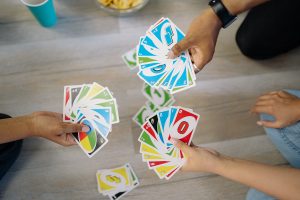 |
 |
 |
 |
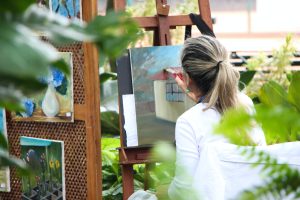 |
 |
Step 2 – Lavorate in gruppo. Guardate il video “Che cosa fai nel tempo libero” from 0: 44 to 2:52 e poi rispondete alle domande sul personaggio collegato al vostro gruppo. Scrivete le vostre risposte sul vostro quaderno
Work in groups – watch the video then answer the questions related to the character for your group. Write your answers in your notebook. We will check the activity with the whole class
Che cosa fa il professore nel tempo libero? (group1)
Che cosa fa lo studente 1? (group 2)
Che cosa fa lo studente 2 ? (group 3)
Che cosa fa lo studente 3? (group 4)
Step 3 – Usate le tabelle sotto per parlare dei vostri interessi.
Use the charts below to talk about what you like to do in your free time.
Completa almeno 6 caselle di questa tabella con le attività che fai nel tempo libero.
Fill in at least 6 boxes in the chart below with the activities you do in your free time.
| Il mio tempo libero | |||||||
| lunedì | martedì | mercoledì | giovedì | venerdì | sabato | domenica | |
| mattino | |||||||
| pomeriggio | |||||||
| sera | |||||||
Work in pairs and think about questions that you can ask to your classmates about their free time then check with your instructor: As for example:
What do you do on… / What sport do you do on… / When do you ….during the week? / Do you….on….
Il mio compagno- Chiedi al tuo compagno di classe! Fai domande sulle attività del tempo libero e poi completa la tabella sotto con le attività del suo compagno/ della sua compagna.
Ask your partner questions about what they do during the week and fill the chart below with their activities.
| Il tempo libero del mio compagno | |||||||
| lunedì | martedì | mercoledì | giovedì | venerdì | sabato | domenica | |
| mattino | |||||||
| pomeriggio | |||||||
| sera | |||||||
Step 4 – Racconta ai tuoi compagni di classe che cosa fai nel tempo libero e che cosa fa il tuo compagno / la tua compagna.
Tell the class what you do in your free time and what your classmate does. Use io / lui-lei / noi if you do something together or have something in common.
3.3 – Lo sport in Italia
A casa
Studia il vocabolario: “Le attività del tempo libero e la grammatica “Il verbo piacere” su questo libro e completa gli esercizi . Vai su Blinklearning. e completa gli esercizi con il voto.
Study the vocabulary and the grammar then do the exercises embedded in this book at your own pace while you study. Please follow this link to complete graded activities Blinklearning.
Leggiamo#3
Lo sport in Italia
Go to Canvas to complete Leggiamo#3
Gli italiani amano molto fare sport e guardare le gare sportive di tutte le discipline. Tutti gli italiani tifano per gli “Azzurri”, gli atleti che giocano nella squadra nazionale italiana nei diversi sport.
Il calcio è lo sport più popolare in Italia. Ogni città Italiana ha una oppure due squadre che competono a livello nazionale e tantissime altre squadre che competono a livello provinciale, regionale e comunale.
Le squadre di calcio più famose sono Juventus, Inter, Milan, Lazio, Roma etc. e gareggiano per la vittoria dello scudetto. Il Napoli vince lo scudetto nel 2023.
Altri sport famosi in Italian sono l’automobilismo e il ciclismo.
L’automobilismo è famoso grazie alla Ferrari e alle gare di Formula 1 (F1). La Ferrari è l’unica scuderia che partecipa alla F1 dal 1950 ad oggi. La Ferrari vince 16 campionati mondiali con diversi piloti. Il pilota con più vittorie in Ferrari è Michael Schumacher. Le Ferrari si chiamano anche “Le Rosse” di Maranello (Maranello è una piccola città dove costruiscono la Ferrari).
Gli Italiani seguono anche il “Giro d’Italia”, una corsa in bicicletta con tappe in tutta Italia. La gara si svolge tra la fine di maggio e l’inizio di giugno.
Tra gli altri sport popolari ci sono il nuoto, lo sci, la pallacanestro, la pallavolo e il tennis.
Ci sono altri sport meno seguiti, ma in queste categorie “gli Azzurri” vincono sempre molte medaglie ai campionati europei, mondiali e anche alle Olimpiadi. Tra questi sport ci sono: la palla a nuoto, la scherma, l’atletica leggera, l’equitazione e il canottaggio, il nuoto sincronizzato, il lancio del peso.
Ma chi sono gli atleti italiani con più vittorie?
Matteo Berrettini: è un campione di tennis italiano. Lui vince due volte al Queen’s a Londra e arriva secondo alla finale di Wimbledon nel 2021.
Bebe Vio: è una campionessa paralimpica di scherma. Bebe vince 2 medaglie d’oro alle Olimpiadi di Tokio nel 2021 e di Rio de Janeiro nel 2016. In totale nella sua carriera vince 11 medaglie d’oro.
Sofia Goggia: Vince la coppa nei campionati mondiali di sci per tre anni seguenti dal 2021 al 2023.
Marcel Jacobs: è un atleta italo-americano, nasce a El Paso in Texas, ma vive in Italia da quando è bambino. Vince la medaglia d’oro alle olimpiadi di Tokio nella corsa 100m e batte il record mondiale.
3.4 – Che cosa ti piace?
In classe
Vocabolario: “Le attività del tempo libero
Grammatica “Il verbo piacere”
Attività 1 – You can use the following document Attività Visita Aosta to fill the charts in activity 1 and 2
Situazione: Tu e il tuo amico parlate delle vostre preferenze sportive.
Situation: You and your friend talk about your preferences regarding sports.
Compito: Completate la tabella qui sotto e poi giocate a due verità e una bugia.
Task: Fill in the chart below and then play two truths and a lie.
Step 1
Guardate il video “Visita Aosta” e completate la tabella sottostante con almeno due esempi per ogni stagione.
Watch the video and fill in the chart below with at least 2 examples for each season.
| autunno | inverno | primavera | estate | |
| sport | ||||
| altre attività |
Step 2
Sul tuo quaderno completa la tabella sotto con quello che ti piace e quello che non ti piace. Fai un esempio per ogni categoria: sport, squadra, atleta famoso, attività del tempo libero.
In your notebook fill in the chart below with things that you like or dislike (one example for each category: sport, team, famous athlete, free time activity)
| Mi piace moltissimo/tantissimo
oppure Mi piacciono moltissimo/ tantissimo
|
Mi piace molto / mi piace un sacco
oppure Mi piacciono molto / mi piacciono un sanno |
Mi piace abbastanza
oppure Mi piacciono abbastanza |
Non mi piace
oppure Non mi piacciono |
Non mi piace tanto
oppure Non mi piacciono tanto |
Non mi piace per niente
oppure Non mi piacciono per niente |
|
| Sport | ||||||
| Squadra | ||||||
| Atleta famoso | ||||||
| Attività del tempo libero |
Riflettiamo: Il verbo Piacere
Check your sentences and then complete the rule below.
- Piace il always followed by ____________and __________
- Piacciono is always followed by ___________
Read the following sentences and discuss with the other classmates the position of the adverbs: molto, poco, tanto, abbastanza, per niente etc.
- Mi piace molto la pizza.
- Non mi piace per niente il Gatorade.
Step 3 – Play two truths and a lie with your classmates. Each student should have a turn to guess the lie of the other student(s).
Step 4 – Play with the whole class.
Attività 2 – Talk about famous Italian athletes
Situazione: Raccogliere informazioni e parlare di atleti famosi italiani.
Situation: Collect information and talk about famous Italian athletes.
Compito: Lavorate in coppia e usate le pagine instagram di atleti famosi italiani per raccogliere informazioni.
Homework: Use the Instagram pages of the Italian famous athletes and collect information then share them with other classmates.
Step 1 – Lavorate in coppie sul documento Atleti Famosi Ogni coppia lavora su un atleta.
Work in pairs on the document Atleti Famosi and pick one athlete per pair.
Step 2 Gli studenti si fanno domande a vicenda per completare le informazioni che mancano nella loro parte della tabella. Usate i profili instagram allegati e Internet per trovare maggiori informazioni sugli atleti.
Look at only one column of the chart (studente 1 or studente 2) and ask questions to the other student about the information that he/she doesn’t have in his/her column. You can use Instagram and Internet to fill the information that neither of you have.
Step 3 – Guardate il profilo instagram dell’atleta e fate tre esempi di cosa fa nel tempo libero.
Check the instagram and make examples of what they do in their free time.
Step 4: In plenaria fate domande sugli atleti e rispondete.
Ask and answer questions about the athletes with the whole class.
3.5 – Che tempo fa
A casa
Study the vocabulary “I mesi, le stagioni e il tempo” and the grammar “Espressioni con Avere” su questo libro e completa gli esercizi . Vai su Blinklearning. e completa gli esercizi con il voto.
Study the vocabulary and the grammar then do the exercises embedded in this book at your own pace while you study. Please follow this link to complete graded activities Blinklearning.
Ascoltiamo#3
Le previsioni del tempo
Go to Canvas to complete Ascoltiamo #3
Watch the video Le previsioni del Tempo – Weather Forecast in Italian on Youtube and then complete the comprehension questions on Canvas.
Be ready to answer the following questions in class
- Tu che cosa indossi quando hai freddo?
- Che cosa fai quando hai caldo?
- Che tempo fa oggi ad Austin?
3.6 – L’abbigliamento
Studia il vocabolario “I mesi e le stagioni” – “l’abbigliamento” e la grammatica “verbi regolari e irregolari in -IRE.” su questo libro e completa gli esercizi . Vai su Blinklearning. e completa gli esercizi con il voto.
Study the vocabulary and the grammar then do the exercises embedded in this book at your own pace while you study. Please follow this link to complete graded activities Blinklearning.
3.7 – Che bel vestito
In classe
Studia il vocabolario “I mesi e le stagioni” – “l’abbigliamento”
Grammatica “verbi regolari e irregolari in -IRE”
Revisione
Lavorate in coppia e cercate su questo sito “Meteo nel mondo” il tempo atmosferico in una città a vostra scelta poi rispondete alle domande seguenti.
Work in pairs and look for the weather forecast of a city of your choice on this website “Meteo nel mondo” then answer to the following questions,
- Quale città scegliete?
- Che tempo fa oggi?
- Quanti gradi ci sono?
- Secondo voi, che cosa indossano le persone?
Attività 1 – Che cosa indossi
Lavorate in gruppi di 3 o 4 persone, guarda qualche minuto del video What people are wearing in Italy – Urban Outfit 2023 (Riccione) .
poi scegliete due persone nel video e rispondete con frasi complete in italiano alle domande/
Work in groups of 3 or 4 people, watch the following video What people are wearing in Italy – Urban Outfit 2023 (Riccione) .
then pick at least two people from the video and answer the following questions
- Che tempo fa a Riccione?
- Cosa indossano queste persone?
- Ti piace il loro abbigliamento? Perché?
- Secondo te, per quale occasione indossano quegli abiti?
Attività 3 – Che bel vestito
Unisci le parole alle immagini. Una parola descrive più immagini.
Match the given words to the images. A word can describe more images.
pantaloni / borsa / impermeabile / scarpe / zaino / pantaloncini / giacca
| Immagine 1 | Immagine 2 | Immagine 3 | Immagine 4 | |
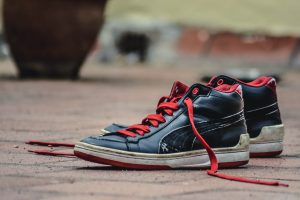 |
 |
 |
 |
|
| Immagine 5 | Immagine 6 | Immagine 7 | Immagine 8 | |
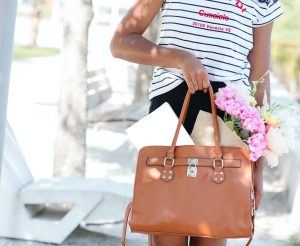 |
 |
 |
 |
Scegliete 4 immagini dalla tabella e fate delle frasi con gli aggettivi questo/ quello.
Pick 4 images from the chart above and make sentences with the adjective questo /quello.
Esempio: Preferisci questo cappello o quei cappelli? Do you prefer this hat or those hats?
| Immagine 1 | Immagine 2 |
 |
 |
Note to the instructor: if you have time you can ask the students to make sentences with the adjective bello in the expression Che bello + noun!
3.8 – I miei interessi
A casa
Studia il vocabolario Review: “Le stagioni” – “l’abbigliamento” e Grammatica Review “verbi regolari e irregolari in -IRE”
Grammatica Study: Le preposizioni semplici
Study the vocabulary and the grammar then do the exercises embedded in this book at your own pace while you study. Please follow this link to complete graded activities Blinklearning.
Parliamo 3
I miei interessi
Go to Canvas to complete Parliamo#3
Leggi le domande e poi registra un video messaggio in cui rispondi alle domande con frasi complete in Italiano.
- Ti piace fare sport? Quale sport pratichi?
- Che cosa fai nel tempo libero?
- Che cosa sai fare e che cosa non sai fare?
- Che cosa indossi quando esci con gli amici?
L’angolo della Pronuncia 3 – I suoni SC / SCH
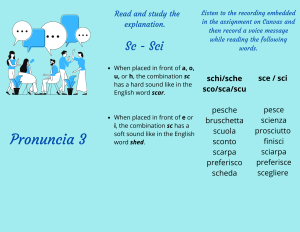
3.9 – Facciamo spese!
In classe
Studia il vocabolario “Le stagioni” – “l’abbigliamento”
Grammatica Review:
“Verbi regolari e irregolari in -ERE”.
“verbi regolari e irregolari in -IRE”
Scriviamo 3
Write a composition of 50 – 60 words in Italian about one of the following topics.
(Questions will not be available during the assessment in class)
Opzione 1
- Qual è il tuo sport preferito?
- Dove, quando e con chi preferisci guardare le partite?
- Che cosa indossano i giocatori?
Opzione 2
- Qual è la tua attività preferita del tempo libero?
- Dove, quando e con chi fai questa attività?
- Che cosa indossi per fare questa attività?
Lettura culturale
La settimana della moda di Milano[1]
Lavorate in gruppo di 4 studenti e a turno leggete ad alta voce il testo seguente, poi rispondete oralmente alle domande di comprensione.
Work in group of 4 students and take turns reading aloud the following article, then orally answer to the comprehension questions below.
Arte, cibo, musica e moda sono i quattro pilastri del Made in Italy. Tra le capitali della moda nel mondo ci sono Parigi, Milano, New York e Londra. In Italia le tre città simbolo per la moda sono Milano, Firenze e Roma.
In Italia, la città più famosa per la moda è Milano perché ha una posizione strategica e molte connessioni internazionali.
Il Quadrilatero della moda è il centro della moda a Milano. Le strade che formano il Quadrilatero della moda sono quattro: via Monte Napoleone, via Manzoni, via della Spiga e corso Venezia. In queste strade ci sono molti negozi, showroom e gioiellerie. Numerosi turisti arrivano da tutto il mondo per fare spese in queste vie di Milano.
Qui c'è anche la Camera Nazionale della Moda Italiana, che dal 1958 coordina gli eventi del settore della moda. In particolare la settimana della moda che si svolge quattro volte all'anno: a gennaio e a giugno per la moda uomo e a febbraio e a settembre per la moda donna.
La Milano Fashion Week ritorna dal 20 al 26 febbraio per l'edizione dedicata alla moda autunno-inverno 2025. Il calendario di eventi è fittissimo, tra sfilate, presentazioni ed eventi esclusivi in tutta la città dedicati al luccicante (shimmering) mondo della moda.
Il calendario definitivo dell'evento comprende 64 sfilate, di cui 5 digitali, 74 presentazioni e 34 eventi, per un totale di 172 eventi,
Anche per questa stagione la Camera Nazionale della Moda offre la possibilità di seguire gli eventi online, tramite milanofashionweek.cameramoda.it.
Rispondi alle domande di comprensione e poi cerca nel testo le informazioni corrette per le risposte sbagliate.
Read the comprehension questions and then look in the articles for the correct information to the wrong answers.
- L'associazione che organizza la settimana della moda si chiama: Quadrilatero V- F
- Il Quadrilatero della moda sono quattro strade di Milano. V - F
- In autunno gli stilisti presentano le collezioni per l'inverno 2024. V - F
- I quattro pilastri del Made in Italy sono: cinema, moda, cibo e musica V - F
- Le persone seguono le sfilate online e in presenza V - F
- I turisti non comprano i vestiti nel Quadrilatero della Moda V - F
3.10 - La sfilata di moda
A casa
Progetto Culturale 3
La sfilata di moda
This is one of the options you can pick for your group cultural project to present at the end of the semester. No submission needed at this time.
Situazione: Tu e i tuoi amici partecipate ad una sfilata di moda della Milano Fashion Week.
Compito: Create una conversazione in cui ogni coppia di studenti presenta brevemente il suo stilista preferito e che cosa fate prima o dopo la sfilata.
Link utili:
Indicazioni:
- Work in group of 4 and check the links embedded to this project.
- Create a role-play where you talk about the following topics
- each pairs introduces an Italian fashion designer of their choice and one outfit presented at the Milano Fashion Week that they like.
- what you wear to participate to the show.
- what you do before or after participating to the show.
- Once your conversation is ready, practice reading it multiple times, check the pronunciation with forvo.com and "memorize" it before you present it in front of the class. Try to make the conversation sound as natural as possible.
- BE CREATIVE and feel free to use props, slideshows (with images), music etc.
- The presentation should last maximum 10 minutes and it must include the role play in Italian about the main cultural topic of this project and 2-3 minutes of grammar review in English
- Groups should pick at least two of the following grammar structures to review:
- verbi regolari o irregolari in ERE/IRE
- il verbo PIACERE o
- Sapere / conoscere or Espressioni con Avere
- Students should use examples from their own script and add an exercise (max 5 sentences) to practice with the whole class.
- Each student has to talk also during the grammar review.
- Groups should pick at least two of the following grammar structures to review:
Grammatica e vocabolario:
While you write your dialogue, make sure to use ONLY the grammar structures studied in this or other units of this course and to include various examples of the following:
- Verbi regolari e irregolari in ARE/ERE/IRE al presente
- il verbo piacere
- il verbo sapere / conoscere
- Espressioni con Avere
- Vocabolario del tempo libero
- Vocabolario dell'abbigliamento
- This article was taken and adapted for educational purposes from [footnote]https://www.milanoweekend.it/articoli/fashion-week-2024-milano-eventi/ ↵
cheer
popular
compete
patch
team
driver / pilot
stop
takes place
less
pillars
fashion
jewelry store
takes place
busy
includes

